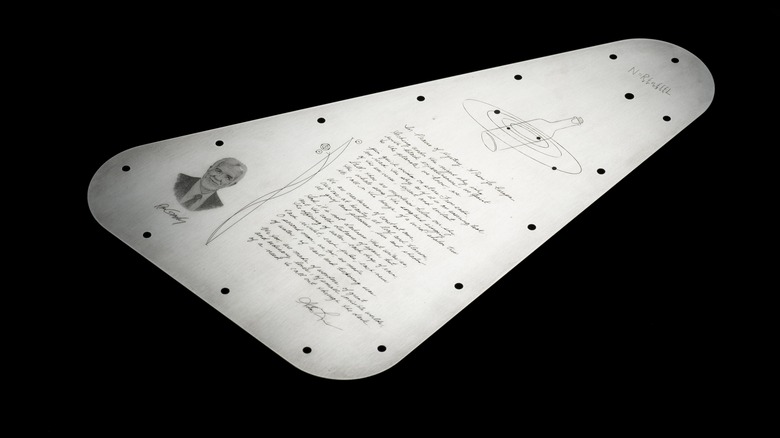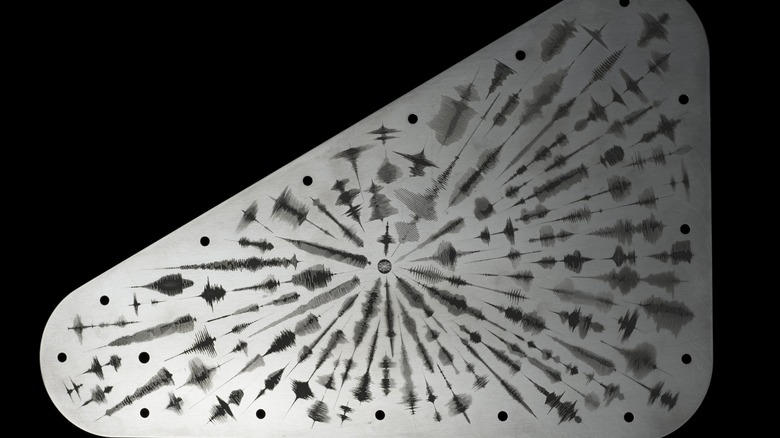NASA's Mission To Europa Will Carry A Special Message From Earth: Here's What It Says
When NASA launches its Europa Clipper mission, scheduled for October 2024, the spacecraft will carry a special surprise aboard alongside its components and instruments: a commemorative plate honoring some inspirational figures here on Earth. Though the agency isn't expecting any aliens to pick up on this message, the plate will feature art and names submitted by the public in honor of the spirit of adventure.
NASA often includes small details or messages where possible on its spacecraft. For Europa Clipper there is an entire plate dedicated to sharing messages with the cosmos. At around 7x11 inches across, there isn't room for all the names NASA wants on the plate, some will be stenciled onto an embedded microchip.
Europa Clipper is set to explore Europa, Jupiter's moon, which is of great interest because it hosts water vapor in its atmosphere. Beneath its thick, icy crust, it is thought to host a liquid ocean. That makes it a top location to search for habitability, which is why there is so much excitement about the mission.
"The content and design of Europa Clipper's vault plate are swimming with meaning," said NASA's director of the Planetary Science Division, Lori Glaze. "The plate combines the best humanity has to offer across the universe – science, technology, education, art, and math. The message of connection through water, essential for all forms of life as we know it, perfectly illustrates Earth's tie to this mysterious ocean world we are setting out to explore."
What the message says
The centerpiece of the plate is a handwritten version of the poem "In Praise of Mystery: A Poem for Europa," written by U.S. Poet Laureate Ada Limón. The poem speaks to humanity's love for mystery and stars and the awe when we look up at far-off cosmic objects, particularly those like Europa with mysterious "beckoning seas."
The poem concludes:
"We, too, are made of wonders, of great
and ordinary loves, of small invisible worlds,
of a need to call out through the dark."
It seems like a fitting message for this mission and for NASA and space exploration.
In addition, the plate is also decorated with an image of the system of Jupiter and its moons around a bottle, which is a reference to the Message in a Bottle campaign. NASA invited members of the public to submit their names to be included on the plate, which resulted in a total of 2.6 million names. These have been engraved onto a silicon microchip embedded at the center of the bottle on the illustration.
There are other references to the search for life beyond Earth on the panel too. At the top is the famous Drake Equation, created by astronomer Frank Drake in 1961, which seeks to estimate how many potential advanced civilizations exist in the Milky Way.
Just in case some aliens want a chat, the plate illustrates the radio frequencies humans use for communication, so they would know how to contact us.
The importance of water
All of that is on one side of the plate, along with an image of planetary scientist Ron Greeley who worked for decades to inspire a mission to Europa.
The other side isn't blank. It speaks to the importance of water for the Europa Clipper mission and humanity as a whole. The project visually shows the word water spoken in 103 different languages.
Linguists collected this data and the sounds were converted into waveforms, which illustrate how the words are pronounced. At the center of the illustration is the sign for water in American Sign Language. You can also hear all the different languages spoken aloud on a NASA website.
All this information will be placed on the Europa Clipper spacecraft set to land on Europa in 2030. Then the spacecraft will investigate Europa to see if it could host life.
"We've packed a lot of thought and inspiration into this plate design, as we have into this mission itself," said Robert Pappalardo, Project Scientist at NASA's Jet Propulsion Laboratory. "It's been a decades-long journey, and we can't wait to see what Europa Clipper shows us at this water world."

